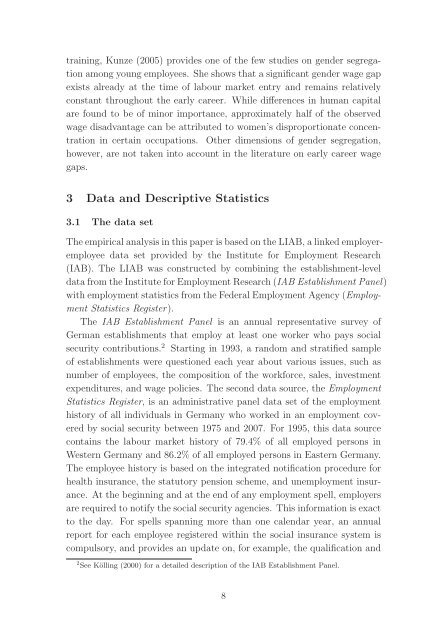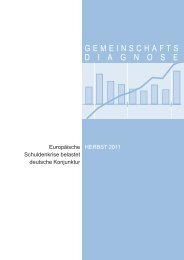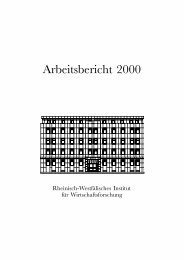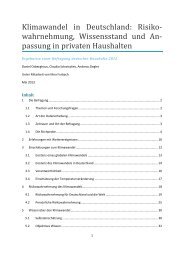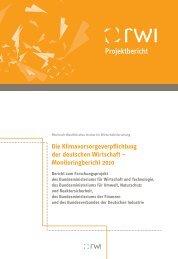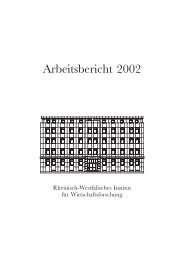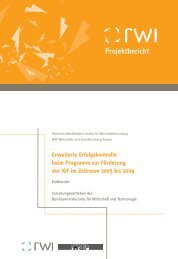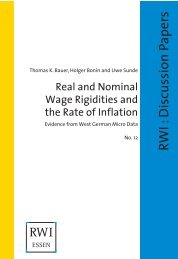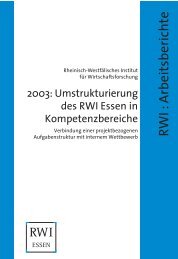Gender Segregation and Gender Wage Differences during the Early ...
Gender Segregation and Gender Wage Differences during the Early ...
Gender Segregation and Gender Wage Differences during the Early ...
You also want an ePaper? Increase the reach of your titles
YUMPU automatically turns print PDFs into web optimized ePapers that Google loves.
training, Kunze (2005) provides one of <strong>the</strong> few studies on gender segregation<br />
among young employees. She shows that a significant gender wage gap<br />
exists already at <strong>the</strong> time of labour market entry <strong>and</strong> remains relatively<br />
constant throughout <strong>the</strong> early career. While differences in human capital<br />
are found to be of minor importance, approximately half of <strong>the</strong> observed<br />
wage disadvantage can be attributed to women’s disproportionate concentration<br />
in certain occupations. O<strong>the</strong>r dimensions of gender segregation,<br />
however, are not taken into account in <strong>the</strong> literature on early career wage<br />
gaps.<br />
3 Data <strong>and</strong> Descriptive Statistics<br />
3.1 The data set<br />
The empirical analysis in this paper is based on <strong>the</strong> LIAB, a linked employeremployee<br />
data set provided by <strong>the</strong> Institute for Employment Research<br />
(IAB). The LIAB was constructed by combining <strong>the</strong> establishment-level<br />
data from <strong>the</strong> Institute for Employment Research (IAB Establishment Panel)<br />
with employment statistics from <strong>the</strong> Federal Employment Agency (Employment<br />
Statistics Register).<br />
The IAB Establishment Panel is an annual representative survey of<br />
German establishments that employ at least one worker who pays social<br />
security contributions. 2 Starting in 1993, a r<strong>and</strong>om <strong>and</strong> stratified sample<br />
of establishments were questioned each year about various issues, such as<br />
number of employees, <strong>the</strong> composition of <strong>the</strong> workforce, sales, investment<br />
expenditures, <strong>and</strong> wage policies. The second data source, <strong>the</strong> Employment<br />
Statistics Register, is an administrative panel data set of <strong>the</strong> employment<br />
history of all individuals in Germany who worked in an employment covered<br />
by social security between 1975 <strong>and</strong> 2007. For 1995, this data source<br />
contains <strong>the</strong> labour market history of 79.4% of all employed persons in<br />
Western Germany <strong>and</strong> 86.2% of all employed persons in Eastern Germany.<br />
The employee history is based on <strong>the</strong> integrated notification procedure for<br />
health insurance, <strong>the</strong> statutory pension scheme, <strong>and</strong> unemployment insurance.<br />
At <strong>the</strong> beginning <strong>and</strong> at <strong>the</strong> end of any employment spell, employers<br />
are required to notify <strong>the</strong> social security agencies. This information is exact<br />
to <strong>the</strong> day. For spells spanning more than one calendar year, an annual<br />
report for each employee registered within <strong>the</strong> social insurance system is<br />
compulsory, <strong>and</strong> provides an update on, for example, <strong>the</strong> qualification <strong>and</strong><br />
2 See Kölling (2000) for a detailed description of <strong>the</strong> IAB Establishment Panel.<br />
8


